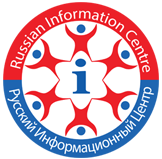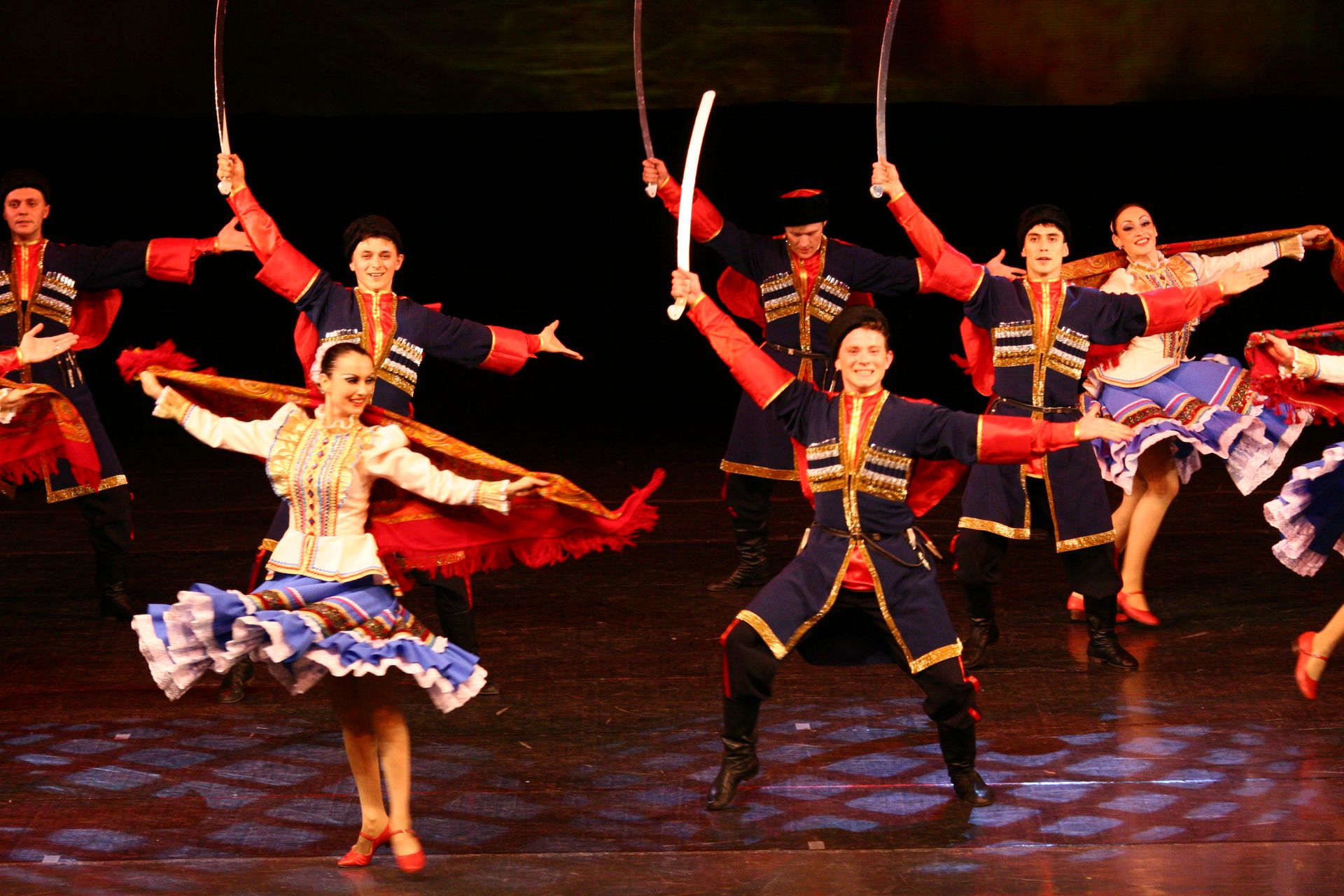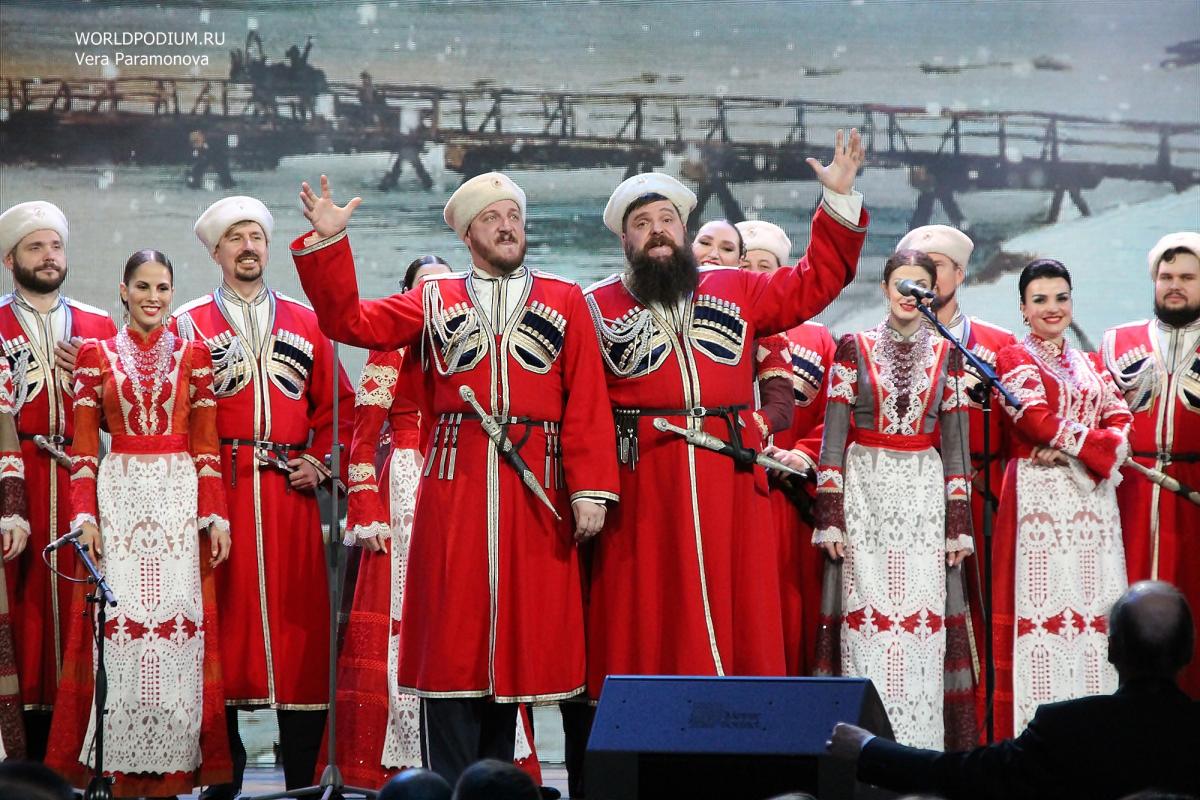Cossacks. Brief history of the Cossacks
In historical development of any nation, there were moments when a certain ethnic group was separated and thus created a separate cultural layer. In some cases, such cultural elements co-existed peacefully with their nation; in others, they fought for an equal place. An example of such a militant ethnic group can be considered the Cossacks. Representatives of this cultural group have always had a special perception of the world and a very acute religiosity. The history of the Cossacks dates back to the distant XV century, when the States of Europe were mired in internecine wars and dynastic coups.
In Russian history, the Cossacks are a unique phenomenon. This is a society that has become one of the reasons that allowed the Russian Empire to grow to such a huge size, and most importantly – to secure new lands, turning them into full-fledged components of one great country.
Etymology of the word “Cossack”
Many modern people have a General idea that a Cossack is a warrior or a type of warrior who lived in a certain historical period and fought for their freedom. “Cossack” – in translation from the Turkic language means “free man”. There are also many pther theories, each of which explains this word quite differently, but the most common theory is that the Cossack was a free man, but armed, ready to attack and fight.
Historical origin
Cossacks were first mentioned in the Chronicles in the XIV century. It is reported that in Sugdea, the current the Sudak (Crimea), died one Almalu, slaughtered by the Cossacks. That time Sudak was the center of the slave trade of the Northern Black sea region and if not for the Zaporozhye Cossacks, there would have been much more Russian slaves.
Also in the chronicle of 1444 “Tale of Mustapha Tsarevich” mentioned Ryazan Cossacks who fought with the Ryazan kingdom and Muscovites against this Tatar Prince. In this case, they are described as guards of the city of Ryazan, who came to the aid of the Prince’s squad.
That is, the first sources show the duality of the Cossacks. This term was used, first, for “free people” who settled on the outskirts (usually in the South) of Russian lands, and second, for “serving people”, both the city guard and border troops.

Registered Cossacks of Bogdan Khmelnitsky troupes, XVI centrury
Who was developing the southern outskirts of Russia at that time? These are hunters and runaway farmers, people who were looking for a better life and fleeing from hunger, as well as those who were at odds with the law. They were joined by all the foreigners who also could not sit in one place, and perhaps the remnants of the peoples that inhabited this territory — the Khazars, Scythians, Huns. Forming squads and choosing Atamans (head of the troupe), they fought, then for, then against those with whom they were neighbors.
Involvement in state service of Russian troopes
Apparently, almost simultaneously with the free Cossacks, in Russia and in the Polish-Lithuanian state, the Cossacks appeared as a branch of the army. Often they were the same free Cossacks, at first just fighting as mercenaries, guarding borders and embassies for a fee. Gradually they became a separate class in Russian society, performing the same functions.
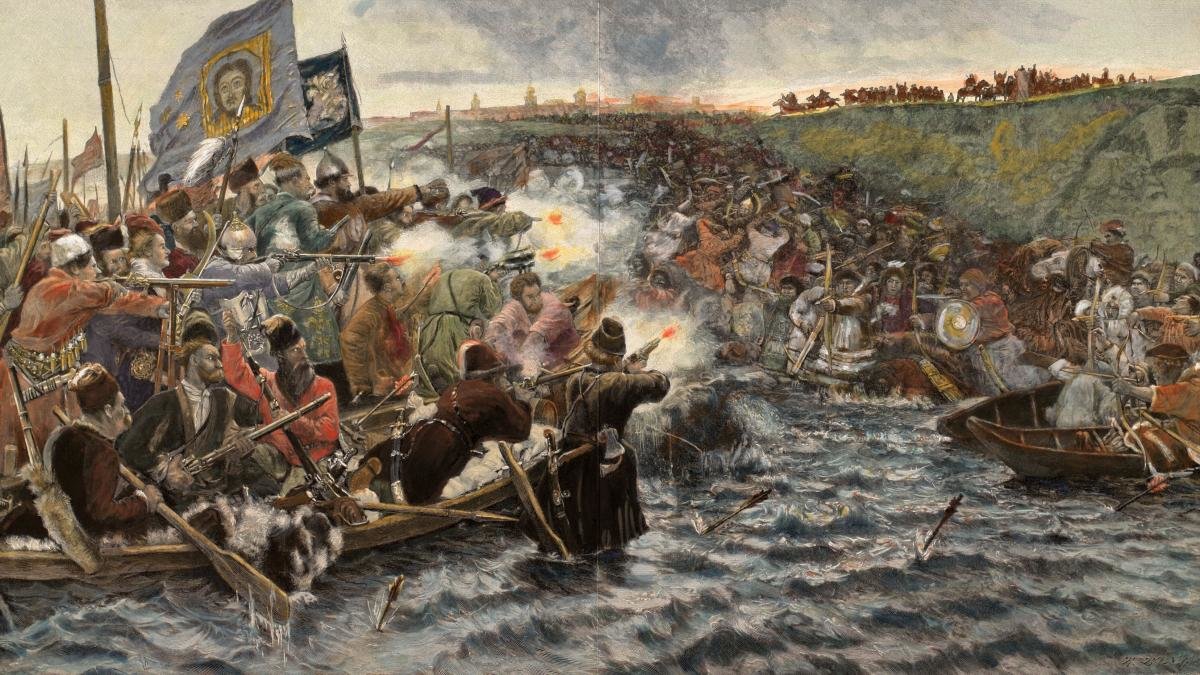
“The Conquest Of Siberia By Yermak”. Artist: Vasily Surikov
Cossack troops helped Russian Tsar expand the borders of the Russian Empire.
The history of the Russian Cossacks is rich in events and extremely confusing, but in short-first Russia, then the Russian Empire almost throughout its history expanded its borders. Sometimes for the sake of land and hunting grounds, sometimes for self-defense, as in the case of the Crimea and the Caucasus, but always among the selected troops were Cossacks and they also settled on the conquered lands. At first they settled on free lands, and then the king brought them to obedience. They built villages and cities, cultivated land, and protected territories from neighbors who did not want to live peacefully or were dissatisfied with the annexation of the aborigines.
They lived peacefully with the civilians, partially adopting their customs, traditions, clothing, language, cuisine, and music. This has led to the fact that the clothing of the Cossacks of different regions of Russia is seriously different, as well as different dialects, customs and songs.
The most striking example of this is the Kuban and Terek Cossacks, who quickly adopted such elements of mountaineer clothing as the Papakha, Circassian, and burka from the peoples of the Caucasus. Their music and songs also acquired Caucasian motifs, for example, the Cossack Lezginka, very similar to the mountain songs. So there was a unique cultural phenomenon that anyone can get acquainted with by going to a concert of the Kuban Cossack choir.
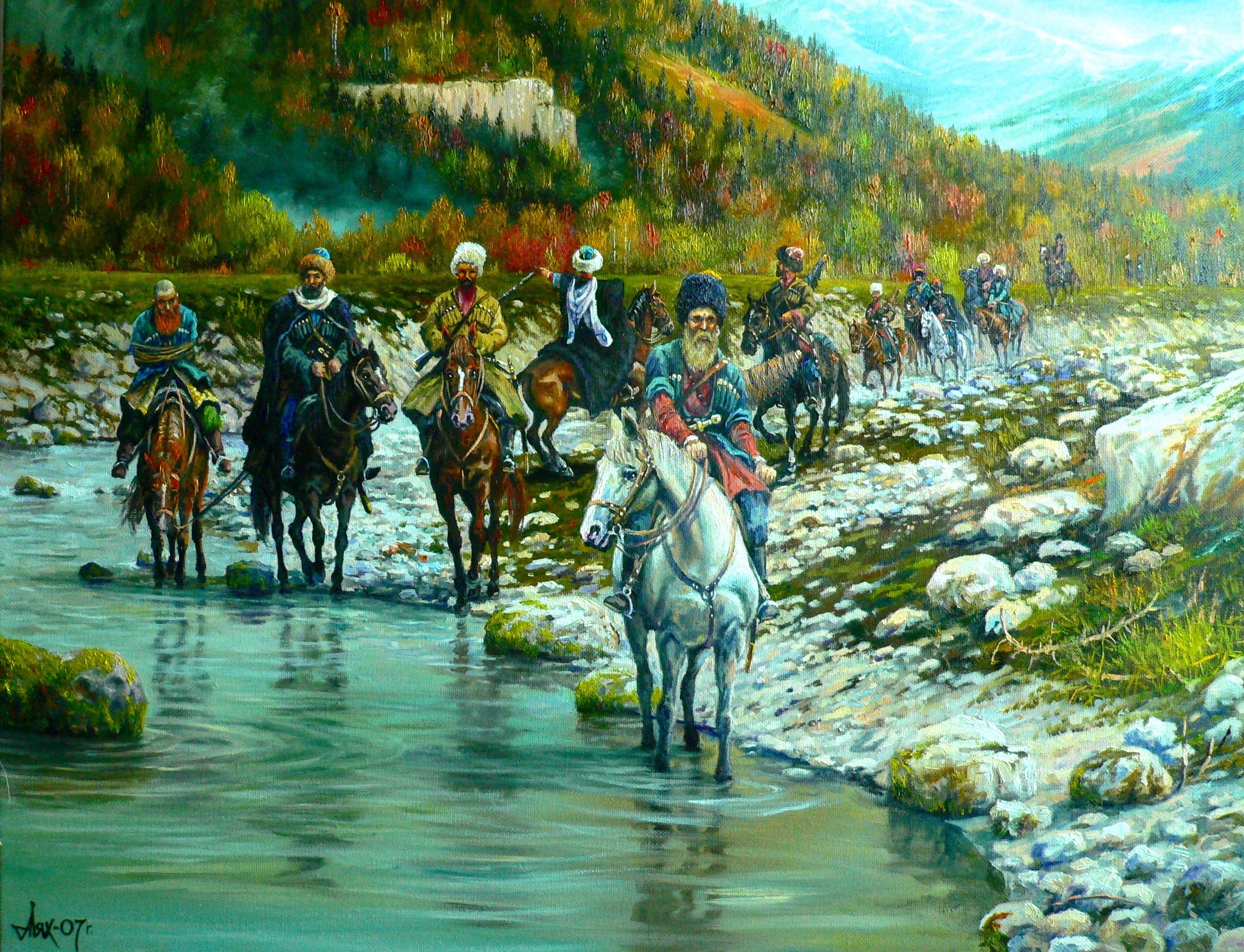
“Cossack, mountains, river”, Artist: Andrey Lyah
Cossack troops in Russia
By the end of the XVII century, the Cossacks in Russia gradually began to transform into those associations that made the whole world consider them the elite of the Russian army. The process ended in the nineteenth century, and the end of the entire system was put by the Great October revolution in 1917 and the Civil war that followed. During that period, the following were distinguished:
Don Cossack
Don Cossacks are the most ancient Cossack culture, which arose in the middle of the XV century. People who for various reasons fled to the outskirts of the country, huddled in groups, chose atamans and lived as they could-hunting, looting, raiding and serving their neighbors when there was another war. Don Cossacks were located on the territory of the Rostov-on-Don, Volgograd, Luhansk and Donetsk regions. The name is historically associated with the Don river. The main difference between Don Cossacks and other Cossack formations is that they developed not just as a military unit, but as an ethnic group with its own cultural characteristics.
For the voluntary and heroic participation of the army of Don Cossacks under the command of Ataman Susar Fedorov in the storming of Kazan (1552), Ivan the Terrible granted the Cossacks the river “Don with all its tributaries” for eternal use. The independent status of the Don Cossacks was confirmed by a letter of commendation, the text of which was read out to the Cossacks for almost 150 years on every Pokrov Day.
And so it was until 1708: Peter the Great ordered to destroy this Independence because of the participation of a significant part of the Don Cossacks in the uprising of Kondratiy Bulavin.
The sovereign service of the Don Cossacks began in 1671, after the oath to Tsar Alexey Mikhailovich Romanov. The participation of the Cossacks in popular uprisings, forced the Russian tsars to restore order in their territories. But only Peter the Great transformed them completely, prohibited the elections of Atamans, and introduced his own hierarchy. Peter the Great included this region in the Russian Empire, its inhabitants were obliged to serve in the tsarist army, and on the Don ordered to build a number of fortresses.
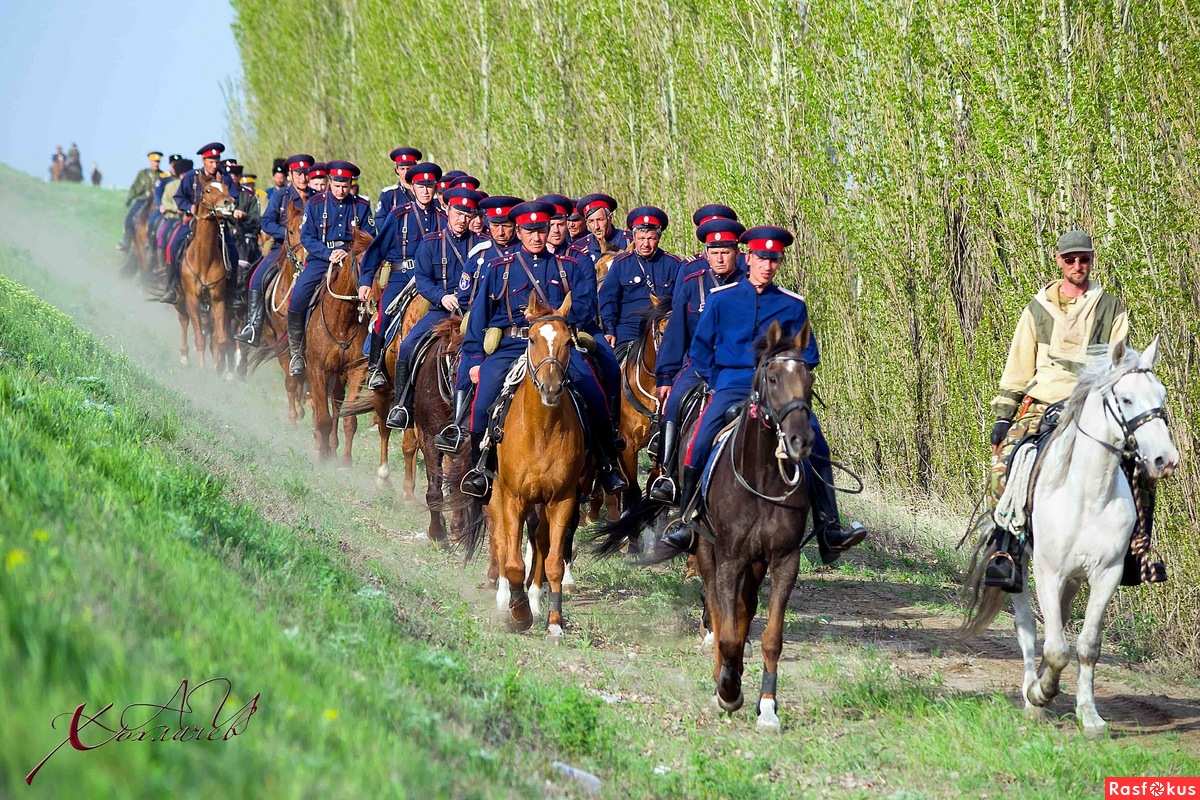
Don Cossacks. The culture of the Don Cossacks has been preserved in our time.
As a result, the Russian Empire got, a brave and experienced army, which was mainly used to protect the southern and Eastern borders of the country.
It follows that the Don Cossack is a person who belongs to a special social formation based on the ethnic factor. The culture of the Don Cossacks has been preserved in our time.
Zaporozhian Cossack
The historical homeland of the Zaporozhian Cossacks is the territory of the so-called Wild field (modern Ukraine). It should be noted that in the XV century, the territory was neutral and did not belong to The Russian Kingdom or to Poland. Basically, the territory of the “Wild field” was subjected to constant raids by the Crimean Tatars. The gradual settlement of these lands by people from both Poland and the Russian Kingdom influenced the development of a new class – the Cossacks.
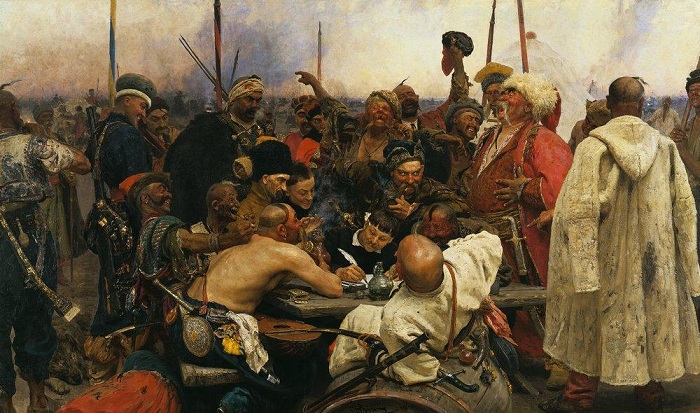
“Zaporozhskye Cossack writing letter to Turskish Sultan”, Artist: Ilia Repin
In fact, the history of the Zaporozhye Cossacks begins with the moment when ordinary people, farmers, begin to inhabit the land of the Wild field, while creating their own self-governing military formations in order to fend off the raids of the Tatars and other nationalities. Gradually formed Zaporozhye Sich. Its entire history — participation in all the wars of the region, incessant uprisings, the conclusion of treaties with neighbors and their violation. By the beginning of the XVI century, the Cossack regiments had become a powerful military force that created great difficulties for neighboring States.
According to historical data that are known today, the first attempt at self-organization by the Cossacks was made in 1552 by Prince Vishnevetsky, better known as Bayda. At his own expense, he created a military base, the Zaporozhye Sich, which was located on the island of Khortytsia. The whole life of the Cossacks took place on it. The location was strategically convenient, as the Sich blocked the passage of Tatars from the Crimea, and was also located in close proximity to the border of Poland.
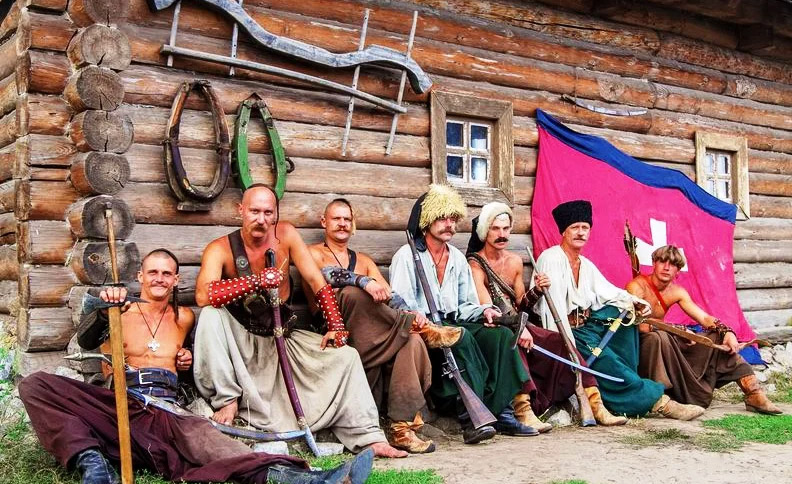
Zaporozhsky Cosscaks, nowadays
In 1569, a new Lithuanian-Polish state was formed – The Polish-Lithuanian Commonwealth. Naturally, this long-awaited Union was very important for both Poland and Lithuania, and the free Cossacks on the borders of the new state acted contrary to the interests of the Polish-Lithuanian Commonwealth. Of course, such fortifications served as an excellent shield against Tatar attacks, but they were completely uncontrolled and did not respect the authority of the crown. Thus, in 1572, king Sigismund II Augustus of the Polish-Lithuanian Commonwealth issued a universal law regulating the hiring of 300 Cossacks for the service of the crown. They were recorded in the list, the register, which caused their name-registered Cossacks. Such units were always in full combat readiness to repel Tatar raids on the borders of the Polish-Lithuanian Commonwealth as quickly as possible, as well as to suppress periodically occurring peasant uprisings.
From 1583 to 1657, some Cossack leaders raised uprisings in order to free themselves from the influence of the Polish-Lithuanian Commonwealth and other States that were trying to subdue the lands of the yet-to-be-formed Ukraine. The strongest desire for independence began to manifest itself among the Cossack class after 1620, when Hetman Sagaidachny together with the entire Zaporozhye army joined the Kiev brotherhood.
This action marked the unity of Cossack traditions with the Orthodox faith. From that moment on, the battles of the Cossacks were not only liberating, but also religious in nature.
After the unsuccessful national liberation war in the XVII century, as well as the beginning of the troubles, the military power of the Cossacks was significantly undermined. In addition, the Cossacks lost support from the Russian Empire after switching sides with Sweden in the battle of Poltava, in which the army of the Cossacks was led by Ivan Mazepa.
As a result of this series of historical events in the XVIII century, a dynamic process of storytelling begins, which reached its peak during the time of the Empress Catherine II. In 1775, the Zaporozhye Sich was liquidated. However, the Cossacks were given a choice: go their own way (to live an ordinary peasant life) or join the Hussar and Dragoon regiments, which many took advantage of. Nevertheless, there remained a significant part of the Cossack army (about 12,000 people), which did not accept the offer of the Russian Empire.
To ensure the former preservation of borders, as well as in any way legalize the “Cossack remnants”, on the initiative of Alexander Suvorov, the Black sea Cossack Army was created in 1790. And already in the XIX century, the Azov Cossack army was formed, which mainly guarded the Caucasian coast, and managed to show itself in the Crimean war, where the Plastun scouts of their troops showed amazing dexterity and prowess.
Kuban Cossack
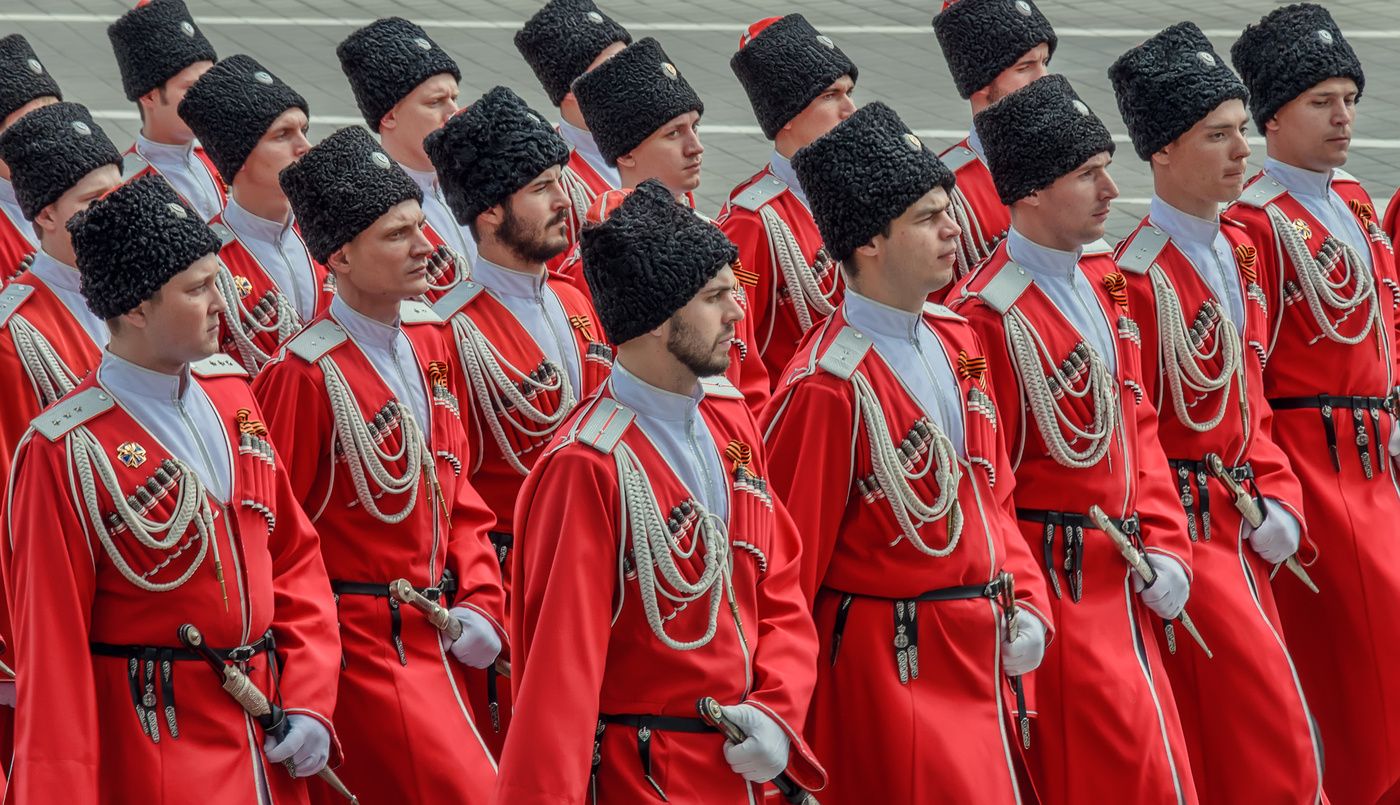
Kuban Cossacks, nowadays
Kuban Cossacks, appeared in 1860. It was formed from several military Cossack formations that existed at that time. After the Russo-Turkish war, it became necessary to settle new lands and, at the same time, find a use for the Zaporozhye – violent and poorly managed subjects of the Russian Empire. They were granted Taman with the surrounding area, and they themselves received the name – the black Sea Cossack army. Then, after long negotiations, they were given the Kuban. This was an impressive migration of Cossacks — about 25 thousand people moved to their new homeland, started creating a defensive line and managing the new lands.
The basis of the Kuban Cossacks, in addition to the Black sea Cossack army, was the Caucasian Cossack army, which was abolished due to the end of the Caucasian war. This military formation was created as a border force to control the situation in the Caucasus. The war in this territory was over, but stability was constantly under threat. The Cossacks became an excellent buffer between the Caucasus and the Russian Empire.
The reorganization under common standards, the change of uniforms to the clothing of mountaineers, as well as the addition of Cossack regiments from other regions of the country and just peasants and retired soldiers led to the creation of a completely new community.
After some time, these military formations became a professional part of the armed forces of the Russian Empire. The Kuban Cossacks were based in the region of the North Caucasus (the territory of modern Krasnodar territory).
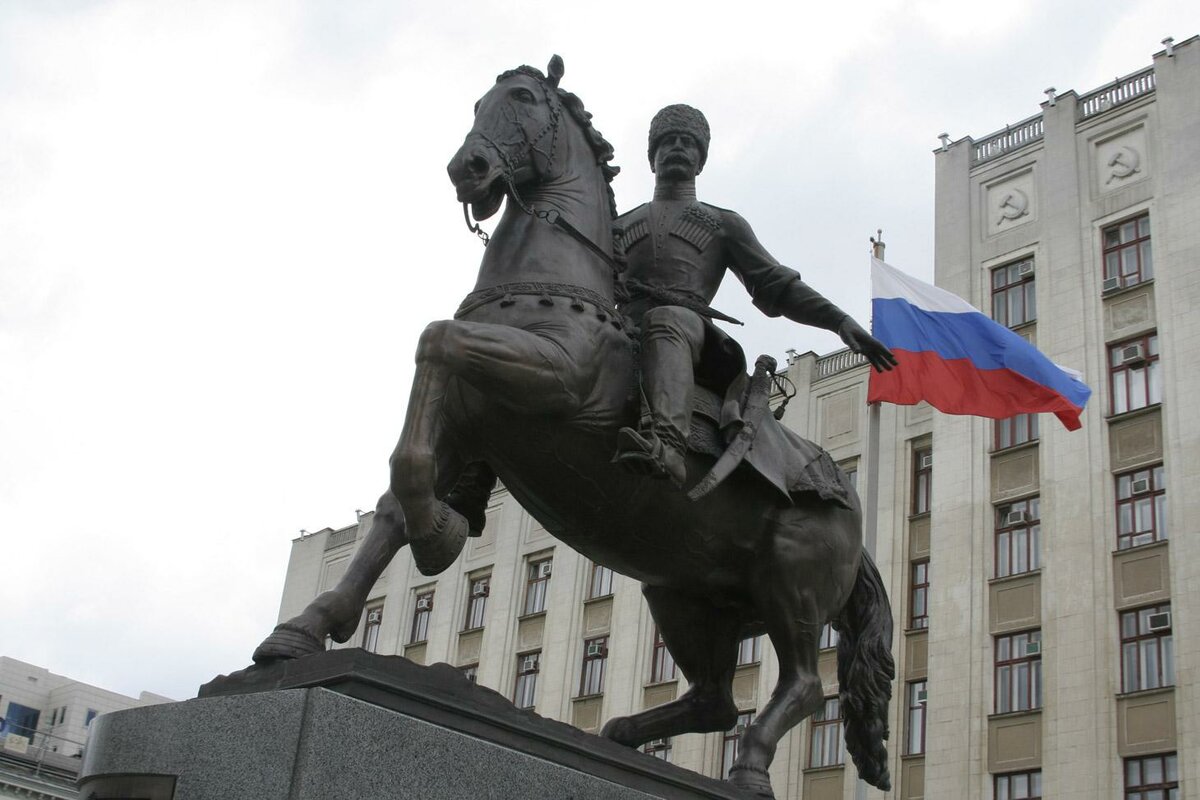
Monument to Cossack in Krasnodar city (Kuban)
In addition, representatives of this army were involved during the great Patriotic war. Today, the life of the Kuban Cossacks, their traditions and culture have been preserved thanks to the formed Kuban military Cossack society.
The role of Cossacks in the history of Russia
From the above-mentioned, historically formed communities, by the beginning of the XX century, the following Cossack troops were formed:
Amur, Astrakhan, Don, Transbaikal, Kuban, Orenburg, Semirechensk, Siberian, Tersk, Ural, Ussuri. By that time, there were almost 3 million of them (with their families), which is just over 2% of the country’s population. They participated in all the most important events of the country – in the protection of borders and important persons, military campaigns and accompanying scientific expeditions, in quelling popular unrest. They proved to be real heroes during the First World war. After the revolution, some of them joined the White guard movement, and some enthusiastically accepted the power of the Bolsheviks.
Unfortunately, the misfortunes of this class did not stop there – the new government of USSR began to consistently pursue a policy of raskazachivaniya (destruction of Cossacks), taking away their privileges and repressing them. The Union into collective farms was also not smooth.
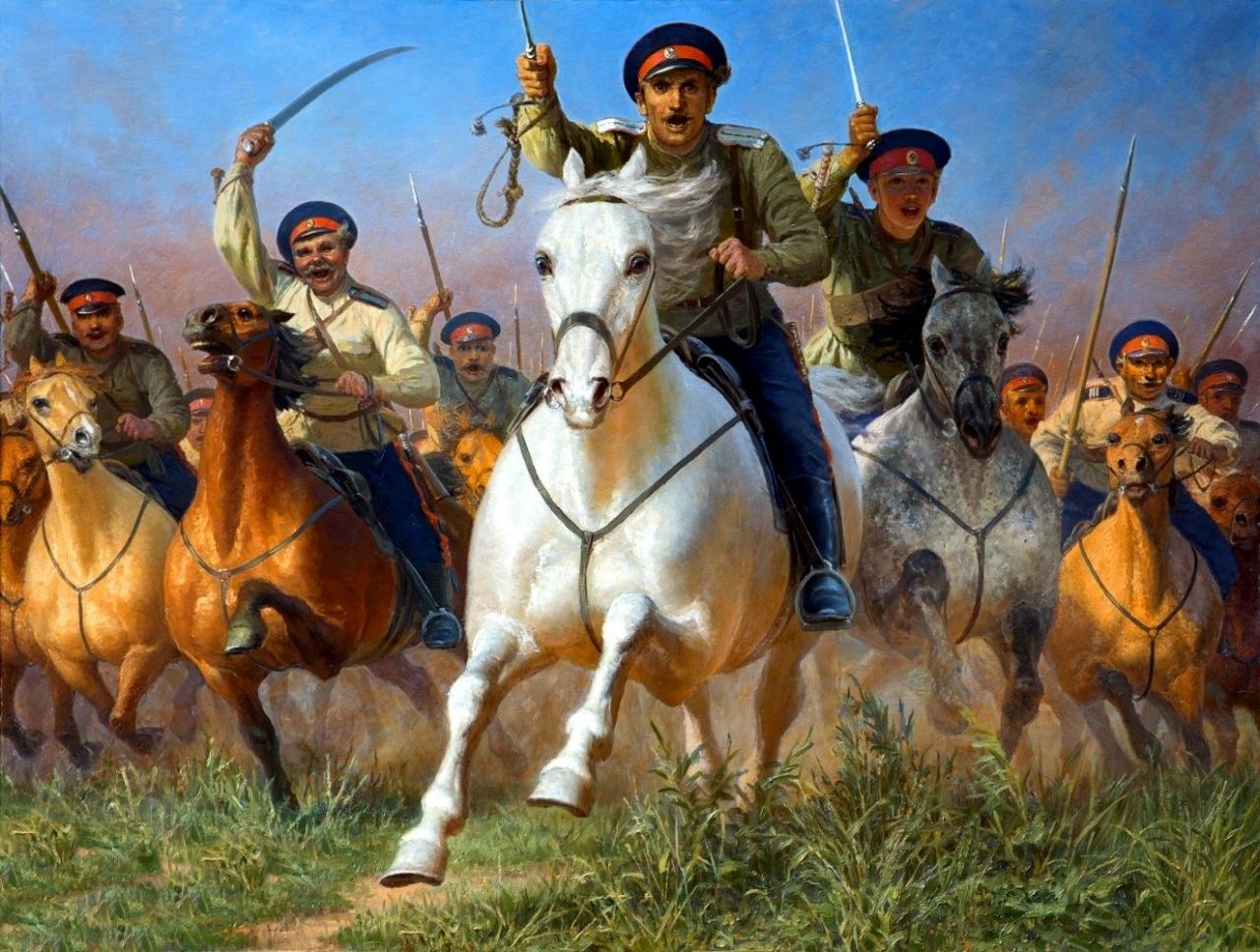
Cossacks during First World War (1914-1917)
In the great Patriotic war, the Cossack cavalry and Plastun divisions, which were returned to their traditional uniforms, showed good training, military ingenuity, bravery and true heroism. Seven cavalry corps and the 17 cavalry division was awarded guards status. Many people from the Cossack class served in other units, including as volunteers. In just four years of war, the 262nd cavalrymen were awarded as Hero of the Soviet Union.
Cossacks – Heroes of the second world War, this is known throughout the country General D. Karbyshev, Admiral A. Golovko, General M. Popov, tank ace D. Lavrinenko, weapons designer F. Tokarev , etc.
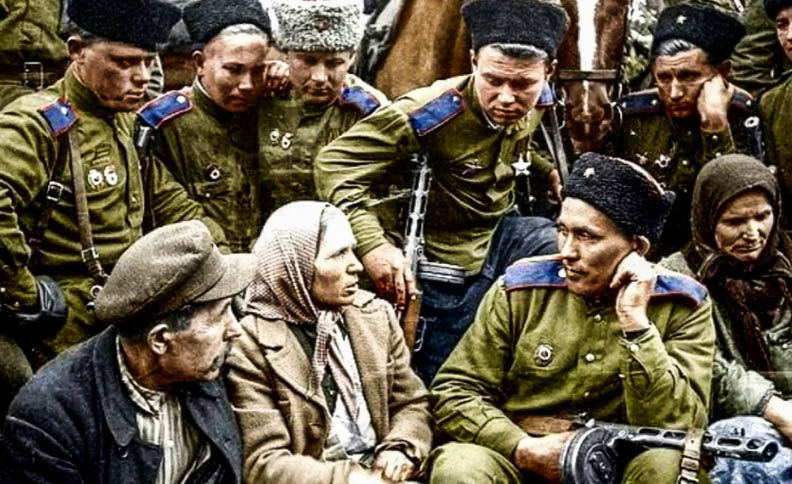
During the Second World War the Cossacks showed their exceptional bravery (1941-1945)
Undoubtedly, the Cossacks are not just military formations, but a separate ethnic group that has built its own special culture for several centuries . On the territory of the modern Russian Federation, there are about 140 thousand people who record their nationality as” Cossack”.
You can get acquainted with customs and traditions, visit the current village of Cossack community in St.Petersburg and even become one of them. Please joint one of the program that you can find on this page: Read more >>
